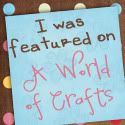My children and I have recently become interested in Greek myths because of their inclusion in a show we love to watch. I remember learning a little bit about them when I was in school, but besides a few names, I couldn't remember much. So, I was excited when the opportunity arose for us to review D'Aulaires' Greek Myths from Memoria Press.
While we use some aspects of classical education in our schooling, we are in no way classical homeschoolers. Honestly, I am not exactly sure what constitutes a "classical education." However, I do know that I have been happy with the other product we reviewed from Memoria Press in the past, so I was looking forward to enriching our schooling with some classical Greek myths.
What did we receive?
We received the D'Aulaire's Greek Myths Set, which includes a soft cover edition of D'Aulaires' Book of Greek Myths, the Student Guide, the Teacher Guide, and the Flashcards.
D'Aulaire's Book of Greek Myths
We have become quite familiar with D'Aulaires' biographical picture books this past school year, because our core curriculum has included quite a few of them on the reading list. I figured the Greek Myths book would be of similar style and quality, and I was correct. The illustrations are gorgeous and really help to tell the story. The book alternates between full and partial page illustrations, and also includes full vivid color pictures and ones that are in shades of brown and black.
I enjoyed the fact that each god or goddess in the above picture was holding something to remind us what they were a god or goddess of.
Memoria Press developed a study of the D'Aulaires' Greek Myths book that really helps the student (and parent) delve into the book and glean understanding. This book is meant to be used by one student.
D'Aulaires' Book of Greek Myths Study Guide
Before getting into the lessons, the authors of the guide look at the question, "Why Study Greek Mythology?" and then explain how to use the guide. There are then 25 lessons with a review lesson after each fifth lesson. Toward the end of the book, after the lessons and final review, you will find some helpful pages. First there are three pages of drill questions, then the "Greek Myths Lists" page that gets filled in as we complete the guide. Finally there are some map pages and a pronunciation guide.
Let's take a closer look at the actual lessons.
Each lesson is arranged the same way. There are four sections:
- Facts to Know
- Vocabulary
- Comprehension Questions
- Activities
The Facts to Know will include important characters or items along with a short description.
The Vocabulary section contains 10 words shared within the context it is found in the story. The children are to come up with a definition and write it on the line. Sometimes the meaning can be determined by the context, other times we have to look it up or use the answers in the Teacher Guide.
The Comprehension Questions are straight forward fact-finding questions. You can figure out the answers right from the story.
The Activities section goes a little deeper. There are always people, places, or items to identify along with activities to complete. These activities include questions that ask the student to go beyond straight facts available in the story. Sometimes we may need to look toward Biblical knowledge or even history or other modern knowledge.
The D'Aulaires' Book of Greek Myths Teacher Guide is just about identical to the Student Guide.
The lesson pages are the same, except for the fact that the answers are included. Also, there are no drill pages, map pages or pronunciation guide pages.
Flashcards
Flashcards are also included to help the children study important facts from each lesson. There are little numbers in the top left-hand corner to show what lesson they go with. One side shows the name, the other the definition/description. I store these in my folder until we get to the lesson, and then they are separated and moved to the zippy bag so we can pull them out and work on memorizing the information.
I admit I was a bit confused initially regarding the facts that are included on the flashcards. It is not exactly the same material that is given in the Facts to Know section. However, I did discover that it is the information that is needed for the drill questions at the back of the Student Guide.
How did we use D'Aulaires' Greek Myths?
We included the reading of the Greek Myths book in our story time. Due to the fact that we are reading quite a few books at a sitting and I am including the little ones, I have been spreading out the reading of each lesson, taking more than one day to read the pages. I also will reread the pages later on in the week before the older girls and I tackle the comprehension questions.
I have the girls use the Facts to Know as copy work, or handwriting practice.
They write the information down in their notebooks. Then we work on the vocabulary, comprehension questions, and activities together, spreading each lesson out for several days. Though I originally wanted this study with Tabitha in mind, I have taken to writing out the answers as we work on this together as my girls are on the younger end of the age range for this study. This also gives me an additional chance to reread parts of the story that are relevant to the question being asked.
What did we think of D'Aulaires' Greek Myths from Memoria Press?
We have been enjoying this study of Greek Myths. I love that the girls have a chance to learn this classic subject and are working on memory and vocabulary development. While we were not instructed to have the children write out the Facts to Know, I felt it was a great way to have the children learn the information.
The girls have been doing a pretty good job memorizing the information that is included on the flashcards and in the Facts to Know section. Sometimes they remember the information that is being asked about for the comprehension questions, but most of the time they need me to reread it. I like to write the answers out in complete sentences so they get used to seeing that done and realize it is what I expect. I have noticed that some of the questions in the Activities section are a bit advanced for them. I admit, I have skipped a couple of questions, such as the one that asked the student to "Explain the expression, 'A revolution eats its children.'"
I do wish there was a little more room given for the children to write down their answers for the comprehension questions and activities. Though the study is suitable for children in grades 3-6, the spaces provided are definitely more suited for children in the higher end of the range, in my opinion. This is the other reason I have taken to filling in the answers the children give me.
This has been a wonderful way to include some classical education in the children's school day. If you are a classical homeschooler, this would be a great study, or if you are looking into classical education. Even if you aren't classical homeschoolers, as we aren't, this is a great way to introduce your children to Greek mythology. There is a lot of memorization of facts, just so you are aware. To me, this is wonderful as developing the memory is so important.
Members of the Schoolhouse Review Crew were given the choice of three different products to review from Memoria Press. In addition to D'Aulaires' Greek Myths, the following were reviewed by my fellow Crew Mates: Traditional Logic I Complete Set and Book of Astronomy Set. Click on the banner below to read their reviews.










































![[PREMIO2009.png]](https://blogger.googleusercontent.com/img/b/R29vZ2xl/AVvXsEjXD_Gx-wZ9EM5hXKrEYLksEBkYfRQtmb8VDVTDG_yyLggQoFIstZsh4zszdG20KqErZicRzEhiNYLty7j3IMXJYsABqkXjr8pp-ncj71xCbpxlXGbGpZq2fTuDQqq1RMKV4DPcDBnBViA/s1600/PREMIO2009.png)




No comments:
Post a Comment
Thank you for visiting my blog today. I love to read your comments, so please leave me one if you have the time.
Blessings